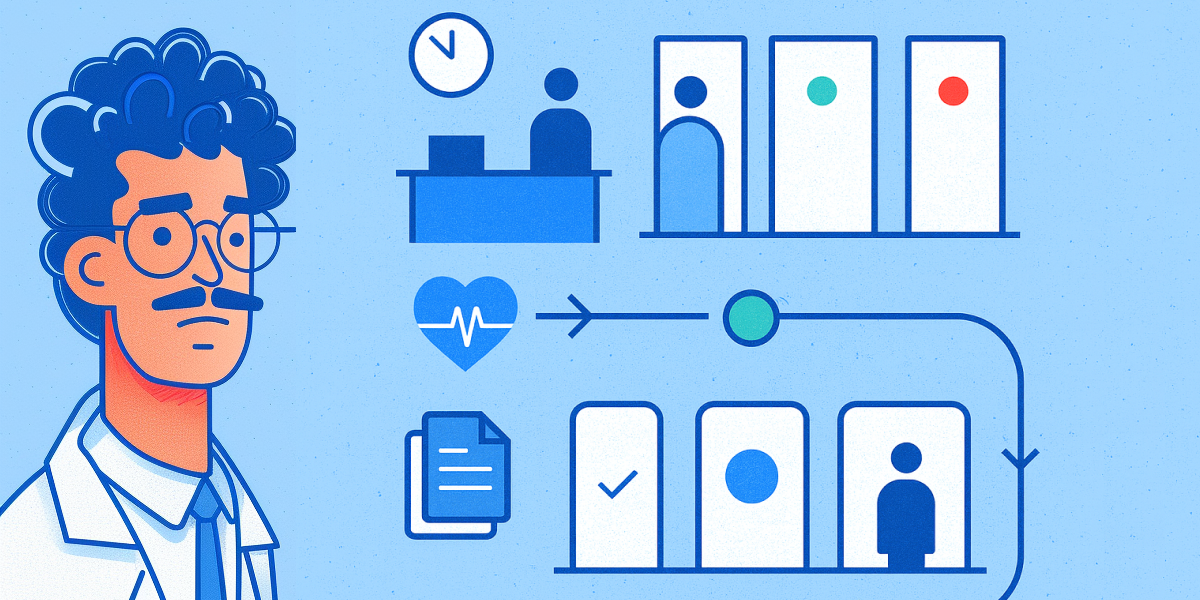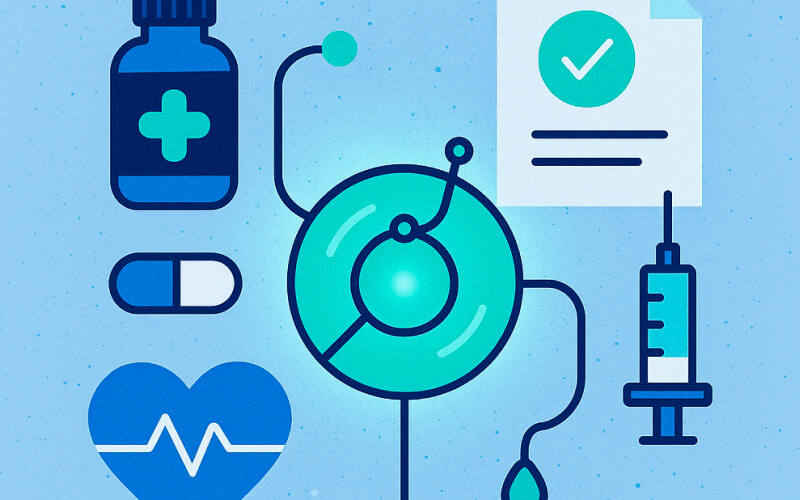Your EHR Is Killing Patient Experience
Why good "record-keeping" alone can’t run your clinic day—and how to add the “system of action” your teams need.

Subscribe to our newsletter today

If you’ve ever stared at a green status board while two rooms sit idle and a provider waits, you’ve felt the gap: EHRs keep beautiful records, but they don’t choreograph the next move in real time. The result is longer waits, missed handoffs, and late-day slip-outs that dent experience and revenue.
The Diagnosis: Records ≠ Actions
EHRs are fantastic systems of record: documentation, reporting, compliance. But patient flow is a system of action problem—minute-to-minute coordination, “who’s next,” and “which room flips now.” Adoption doesn’t equal throughput; portals don’t shorten waits; and turning on APIs doesn’t magically tighten handoffs. And here’s the kicker: EHRs were never designed to solve patient flow and care operations problems.

So, if EHRs were never designed to solve patient flow problems, it makes sense that they might actually make things worse. Let’s dive into the various symptoms of EHR dysfunction, give them a name and show what they cost you and your staff.
EHR Dysfunction Symptoms
Acute Handoff Failure
EHRs live in the past. They can tell you what happened, not what is happening right now. So you and your staff fall back on hallway conversations, door flags, sticky notes, and manual status boards to keep the day moving—tools that don’t reliably update or reach the right person at the right time.
Why it matters: when wait times are kept under 15 minutes, top-box satisfaction is about 4 times more likely.
Cross-Role Blindness
EHRs don’t provide a single, live operational picture that everyone trusts. Providers, MAs, nurses, and the front desk end up refreshing charts and interrupting visits to find people or results. That chasing is a symptom of missing visibility.
Why it matters: clinicians are interrupted 5-11 times per hour. Each interruption is linked to a ~12% rise in procedural failures and a ~13% rise in clinical errors.
Click Fatigue Syndrome
Clunky navigation and inconsistent modules in EHRs mean new users face a steep ramp, and even veterans spend too much time clicking and hunting.
Why it matters: within clinics, wasted time adds up fast. For every one hour of face time with patients, physicians spend an average of ~2 hours on EHR/desk work during the day—plus 1–2 hours more after hours (“pajama time”).
Code-Call Latency
When the EHR is treated as the primary in-clinic communication channel, urgent signals get buried. Inbox messages don’t sort by proximity or urgency, there’s no shared location/state awareness, and accountability is fuzzy once a message is sent.
Why it matters: delayed rapid-response calls (defined as >1 hour from first qualifying vital-sign abnormality) were linked to higher hospital mortality (15% vs 8%), and higher 30-day mortality (20% vs 13%).

EHR Dysfunction Treatment Plan
Share One Operational Picture to Treat Acute Handoff Failure
First-Line Treatment
Put a single live board where everyone can see it: current location, room state, orders in flight, and “who’s on it.” Make the rule: the person who completes a step updates the status immediately.
Advanced Therapy
Stat makes a shared picture automatic. Tablets on the outside of exam rooms and Flowstations in common areas show which rooms are open, occupied, or need cleaning; one-tap updates notify exactly the right person when the next step is ready.
Orchestrate Daily Flow to Treat Cross-Role Blindness
First-Line Treatment
Run a 5-minute AM huddle, a midday reset, and a late-day surge plan. Standardize two or three universal status triggers (e.g., ready-for-provider, ready-for-discharge, room-cleaned) and define who acts on each.
Advanced Therapy
Stat Tags collect team location passively so you know who is where; room states flip with a tap; orders and “ready-for” events trigger role-aware notifications. The Flowstation is always accurate and ready for huddle review.
Implement Modern, Low-Friction Tools to Treat Click Fatigue Syndrome
First-Line Treatment
Document the shortest-path workflow for your 5–7 most common tasks (room ready, vaccine ready, provider needed, clean needed, etc.). Teach it. Audit it.
Advanced Therapy
Stat swaps click-hunting for tap-to-trigger actions and lightweight mobile notifications. Modern UIs mirror the clinic: MAs see rooms, patients, and tasks; providers see who’s ready and where.
Build Truly Rapid Response to Treat Code-Call Latency
First-Line Treatment
Map triggers, responders, and backups. Practice quick, discreet alerts and time the response. Make “recognize → notify → respond” a muscle.
Advanced Therapy
Stat adds speed and certainty to situations with aggressive patients or medical emergencies. Staff need only press a button on their wearable Stat Tag to trigger a signal to all tablets within the surrounding area, alerting all available staff of the emergency and its location.
Clinical Trials
- Lobby waits down ~15% and cycle time down ~17% during peak flu season at a high-volume urgent care, after adding instant alerts and live room status.
- Emergency response times improved ~83%, with alone time down ~28% at a multi-site primary care facility using location-aware duress and code alerts.
- Alone-over-15-minutes reduced 21% and response times faster by 26% by pairing smart alerts with a team challenge.
- An integrated-care rollout unlocked $122K in annual revenue, 1,058 added billable encounters, and 4× team engagement by deploying care teams at the right moment.
Your EHR should remain the system of record for documentation, billing, and exchange. Stat adds the system of action—live signals, role-aware nudges, and passive telemetry (time, location, state) that turns bottlenecks into quick fixes.
Grab the Full Playbook
This post is the highlight reel. The whitepaper adds a few more symptoms and treatments. It also shows the cost in minutes and experience, and gives step-by-step treatments you can run now.






